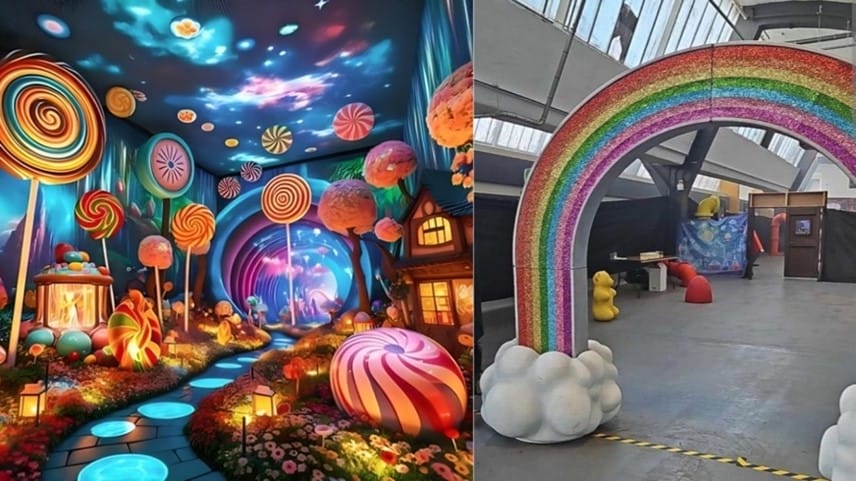Menu
Open
Close

Expectations vs Reality
SCROLL
When expectations don’t meet reality
Every industry does it – estate agents take photos that make rooms look more spacious, cosmetic companies retouch model images to perfection, and I’ve never had a burger that looks like the images on the menu. The practice of selling products through manipulated, aspirational visuals is as old as the CGI hills. And with the unstoppable rise of AI, the line between aspirational and attainable is becoming increasingly blurred.
Take, for example, the now infamous Willy Wonka-inspired event in Glasgow that went viral for all the wrong reasons. While it was undeniably a shambles, let’s forget about that for a minute and instead talk about expectations.
The promotional image for the event promised an extraordinary adventure – magical lands with rivers and fountains, giant mushrooms, butterflies and confectionery as far as the eye could see. Many people claim that this image set unrealistic expectations. Which got us talking – as AI-generated visuals become a staple in the event industry’s arsenal, what impact does this have on customers, and when does it become too far removed from reality?
This creates quite a challenge for those in the business of delivering live experiences. To create hype before an event has happened, we need to create a key visual from scratch. And, sometimes, this visual needs to be created before creases such as budget, venue and production have been ironed out.
We need to amaze and wow with a killer image. We want people to share, book now and get excited. But gone are the days when these images were accepted as being ‘loose’. There was a certain amount of creative license, where it was understood that you were selling a concept, not a road map.
But now, coupled with the trend of brands producing CGI stunts – or faux advertising – there’s an uncomfortable distinction between people who knew there couldn’t possibly be a North Face jacket around Big Ben, while there were many who genuinely believed that there was a London Underground train with Maybelline-enhanced eyelashes.
The Wonka event is an extreme example. Perhaps it all started with an initial image to sell the concept, but then it was an image that led to promotional activity. Maybe there was an urgent need to publish before the final parameters were set. Maybe the production budget got slashed halfway through, but the activation contractually had to go ahead. And maybe it was just a string of bad luck or poor project management. We will never know the reason or nuances, and we are not here to speculate, point fingers or criticise industry work, what is however key here is that the expectation generated by promotional material did not meet reality.
To go forward I think we all need to realise the important role that those initial visuals play in the marketing journey; from the clients selling in the activity to their leadership teams, to how that impacts consumers’ all-important first impressions.
AI has the potential to make events more thrilling than ever. But a good time to remember, as the age-old saying goes, if it looks too good to be true, it probably is.
At Haygarth we are used to marrying the vision with the reality, so if your brand needs an event that lives up to its AI promises then we’re here to help!
Thoughts by Susie Marriott
Haygarth Brand Experience Team

